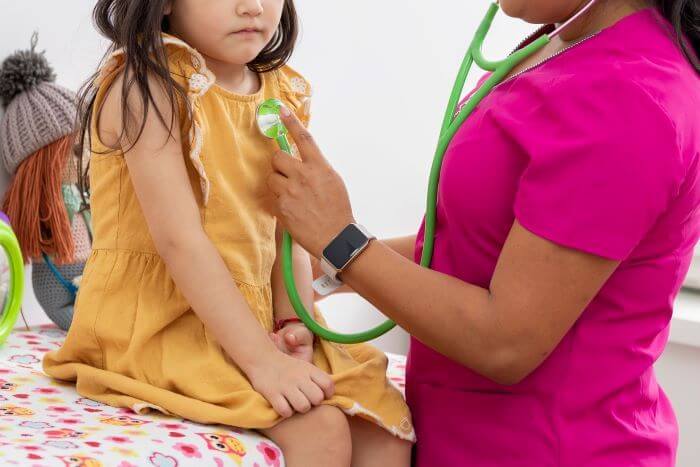
If you’re curious about beginning your path towards locum tenens life saving crisis work, there are some aspects of the job that you should consider. Locums looking to take on humanitarian aid, emergency response, relief for natural disasters, or other crisis projects must be willing to drop everything on short notice, travel to a specific location in which they’re needed, and quickly learn to adjust to a brand new healthcare setting. While healthcare professionals who work on locum projects for humanitarian crises still reap the benefits that any other locum provider would, such as having more freedom and earning higher pay, it does take a special kind of person who is prepared for the demands associated with this line of work.
It may sound like a lot, but luckily there’s another benefit to working on these kinds of humanitarian action missions. Many locum tenens providers choose to do crisis work over regular locums because they feel an immense sense of fulfillment from using their time and skills to help those in the most dire need of their care. One such provider is Angie Oliver, an Adult Gerontology Nurse Practitioner who worked with Wellhart on our Government Emergency Intake Shelter (EIS) Humanitarian Response project.
Acting as a subcontractor to the federal government from April to October of 2021, Wellhart assigned physicians and nurse practitioners to handle both the intake and care for thousands of unaccompanied children who had recently crossed the US/Mexican border.
Of the hundreds of providers who worked on the project, Angie Oliver shared her experience with us in hopes that her story would inspire and inform others.
Before Angie got her start in locums, she was working permanently at a primary care facility in the inner city of Illinois. During her time there, she got to thinking about her career, deciding that locum work held more opportunities to save lives. Angie explained, “I knew that there were other things going on out in the world of primary care, and I wanted to do more”.
While the first locum job Angie completed was a traditional locum assignment doing medical assessments, Wellhart’s Government EIS Response project was her first time working on a humanitarian aid locum project.
Angie remembers first hearing about the children at the border through a wealth of social media and news coverage and thinking to herself, “What can I do to help make their experience better?”. Being a mother and grandmother herself, Angie felt an immense sense of compassion for the children and their struggles, “I looked at my granddaughter and thought, ‘What if it would’ve been her at that border?’”.
Naturally, when her recruiter told her about Wellhart’s EIS project, Angie was immediately drawn to it. With a pediatric ER background, 20+ years of nursing experience, and 6 years under her belt as a nurse practitioner, she knew she was up for the job.
Going into the assignment, Angie knew that the environment and experience would be much different than what she was used to. She wouldn’t have the same set up as she normally would in a traditional clinic, where all needed tools and resources are on-site and readily available, “I needed to have an open mind and be ready for the unexpected”.
Angie’s impression was correct, and when she got to the site of the assignment she quickly realized that in addition to adjusting to a new clinical set up, she’d also have to get used to a different hierarchical arrangement between herself and the other healthcare providers she would be working with. Angie explained, “In a hospital as a nurse, you have the charge nurse, you have the supervisor, the nurse managers, so on and so forth. This [project] was not that way, there is no regular hierarchy, it’s how you respond to the situation ”. During her assignment, Angie and the other providers on site shared responsibility for doing their jobs based not on hierarchy, but instead on how they could provide the best patient care.
Reflecting on her experience, Angie revealed that in addition to feeling more fulfilled from this project than she would at a traditional locum assignment, she also gained some valuable new skills such as how to treat certain rashes, and how to get things done without technology. But these were not the only new lessons that she learned through Welhart’s EIS project, she also imparted some wisdom for us, and any locum providers considering making the leap into humanitarian aid work.
First and foremost, Angie recommends that any provider preparing for their first humanitarian assistance assignment take 3 courses offered by FEMA, course numbers 100, 200, and 700, which brought her a better understanding of what a humanitarian project actually is, and how it works. “Once I did those 3 courses it opened up a whole light to me. Everybody that I trained from that point on, when I showed them how we were in the hierarchy, they were able to find their niche and fit in just fine”.
Angie also advises providers to always ask questions when they don’t know something, be flexible about having accessibility to tools they may need because they may not always be available, and most importantly, to have a caring heart, and be helpful, “That’s most important, because we’re there to help”.
Following her work on the Government Emergency Intake Shelter project, Angie shared, “I would love to work with Wellhart again. I do like the mixture of doing regular primary care locums and then doing some humanitarian work.This line of work makes me say, ‘This is what I got into this for, to help people’”.
Her plans for her future in locum work are to finish out her current contract, take a little vacation, and see what comes next!
Ready to get started on a locum tenens crisis project with Wellhart? Fill out our contact form to get in touch with one of our experienced representatives!
